Orion Problems Threaten Artemis-1 Launch

Update on Orion Final Assembly and Transfer, NASA
“While powering up the spacecraft to prepare for the pressurization of the crew module uprighting system, which ensures the capsule is oriented upward after splashdown, engineers identified an issue with a redundant channel in a power and data unit (PDU) on Orion’s crew module adapter. The team is continuing with other closeout activities while troubleshooting the issue, including installation of temporary covers to ensure components are protected during ground processing and fit checks for bonded tile on the crew module side hatch.”
 Keith’s note: It is likely that this fix will require months since the PDU is not all that easy to reach and things would need to be removed that are not designed to be removed once installed. It is rather unlikely that NASA would allow this Orion spacecraft to fly with this issue since the unit and its redundancy exist to meet some rather basic requirements set by NASA. The current plan (which is always on wheels) calls for the first full-up SLS/Orion launch (Artemis-1) to happen in November 2021. Add in delays caused by weather and the pandemic with the Green Run engine testing of the core stage, and it is becoming rather improbable that this launch will happen at any time in 2021.
Keith’s note: It is likely that this fix will require months since the PDU is not all that easy to reach and things would need to be removed that are not designed to be removed once installed. It is rather unlikely that NASA would allow this Orion spacecraft to fly with this issue since the unit and its redundancy exist to meet some rather basic requirements set by NASA. The current plan (which is always on wheels) calls for the first full-up SLS/Orion launch (Artemis-1) to happen in November 2021. Add in delays caused by weather and the pandemic with the Green Run engine testing of the core stage, and it is becoming rather improbable that this launch will happen at any time in 2021.


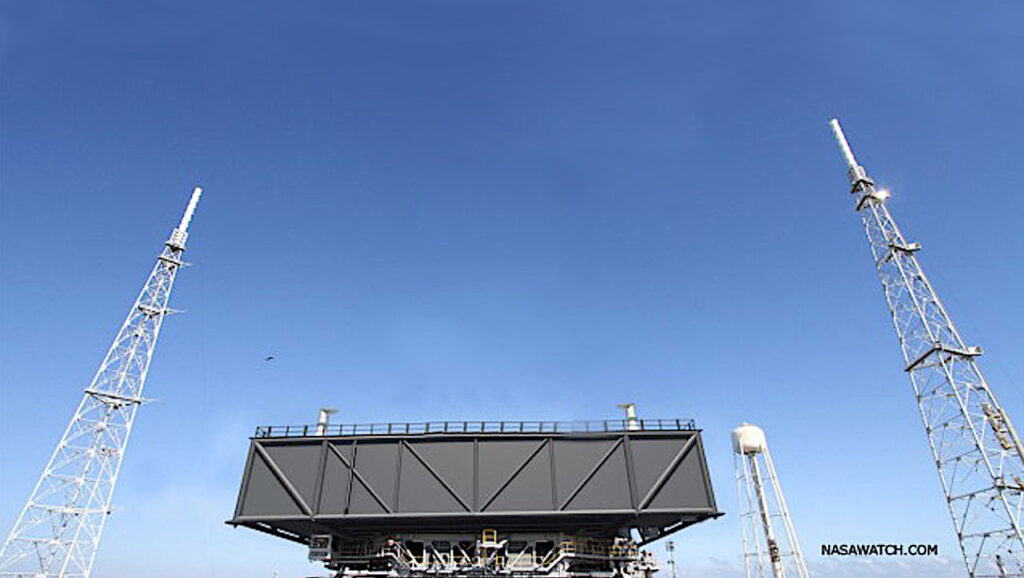
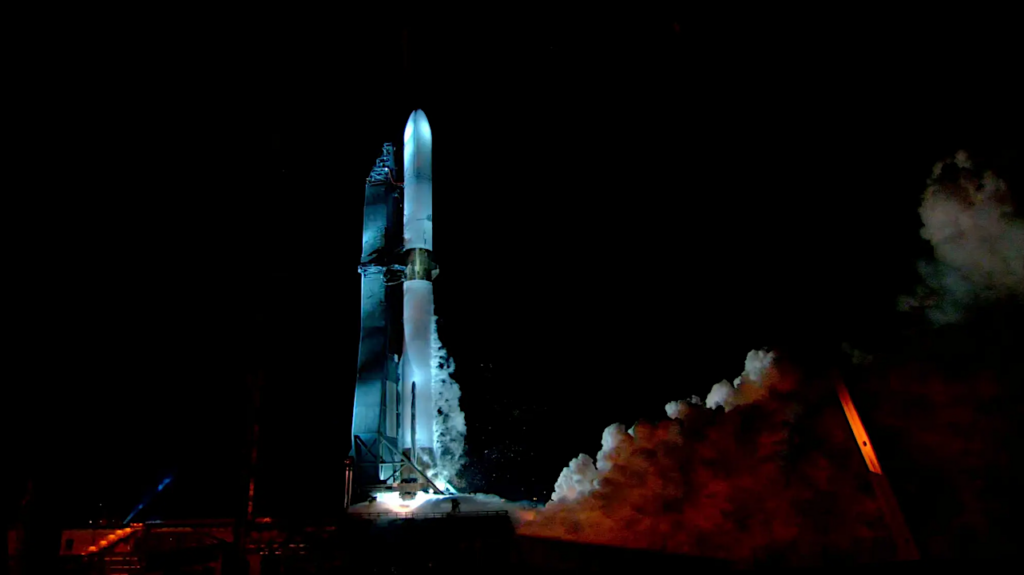
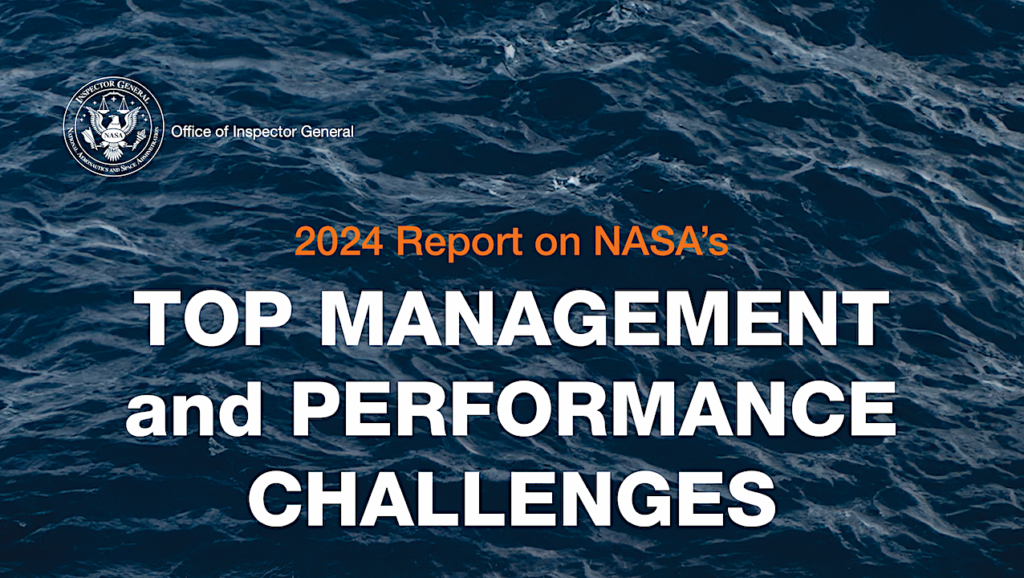
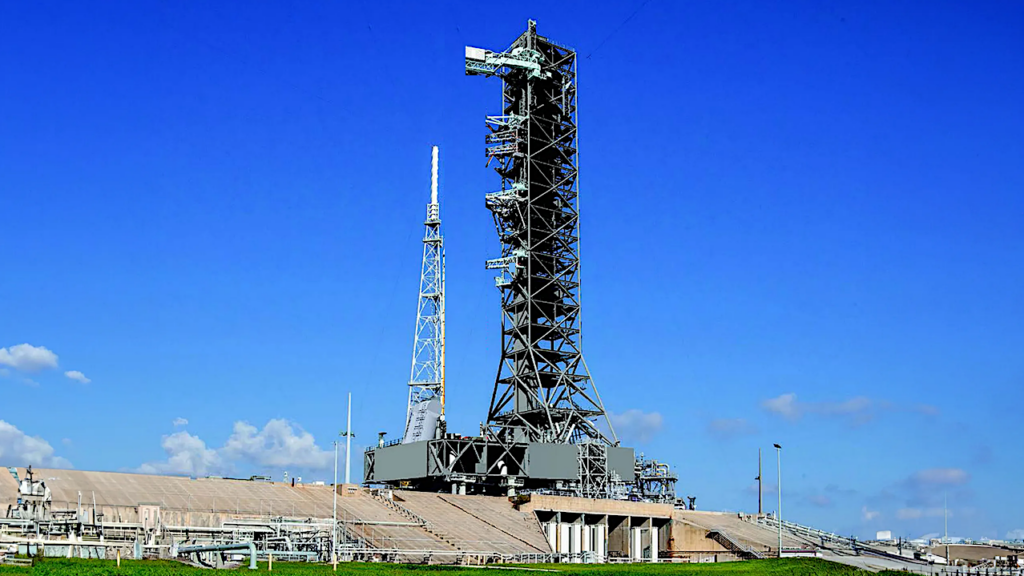
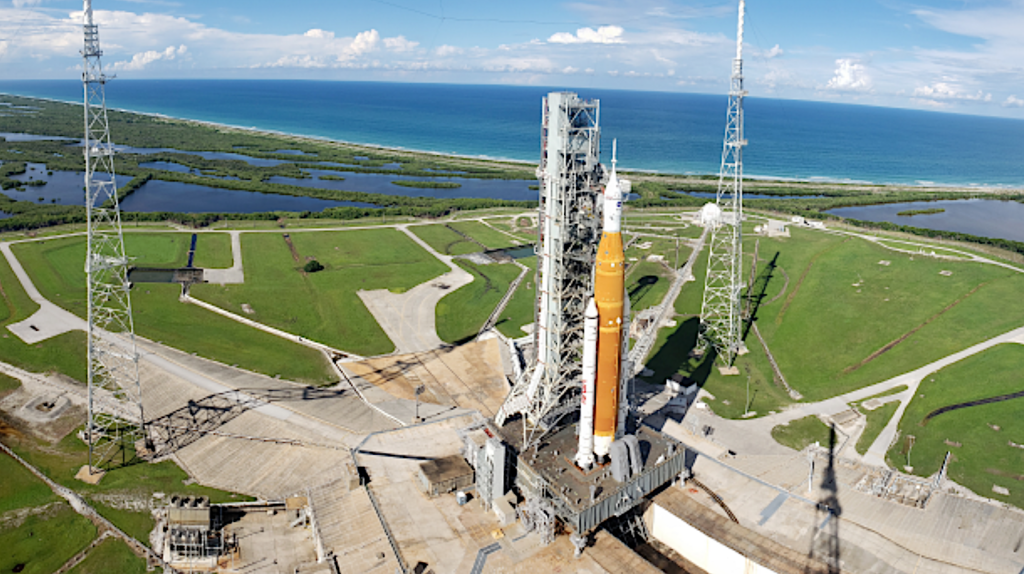
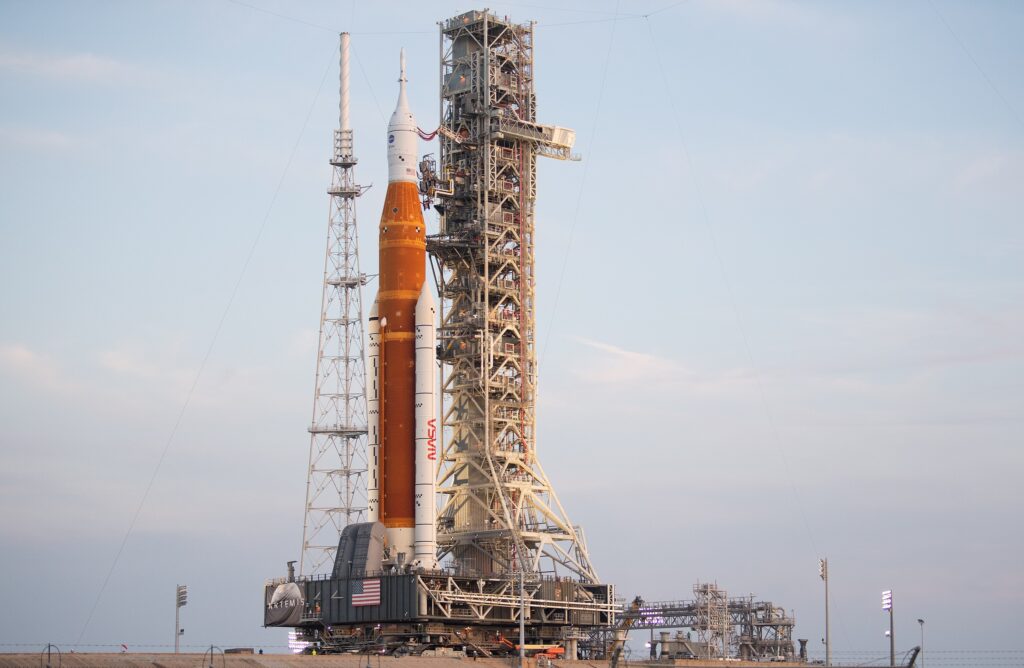

The core stage will make a fine display at the USSRC/MSFC. Whatever happened to the idea of LRUs? Every system on Orion should be designed around LRUs.
Typically at the USSRC, we show off rockets that flew successfully so right now SLS wouldn’t qualify. Anyway, SLS should be used for cargo only.
You would think somebody would have considered what might happen if a hard to reach electronic component were to fail and need replacement. I suppose that is too much to hope for on a $hundreds of millions contract.
I’m not sure how much I would blame LMA and NASA for this. I would blame them, but perhaps not too much… The first Orion capsule was delivered over a year ago. Were the electronics designed to sit around in storage for over a year, while SLS makes its sluggish pace towards launch? It’s at least possible that no one designed those parts on Orion for easy replacement, because they expected and designed for a short time between delivery and flight. After all, Galileo‘s high gain antenna problem wasn’t blamed on the people who designed Galileo; the problem was hauling it back and forth across the country due to the Challenger accident and the subsequent stand-down of the Shuttle program.
Galileo’s antenna problem involved moving parts. A box of electronics are not moving parts and sitting in storage is a rather benign environment compared to what they will encounter during flight.
Electronics don’t require moving parts, but testing them can. And we know they were testing the systems on the Orion capsule. If they weren’t, they wouldn’t have detected the problem. So we’re talking about a system being periodically tested, and _not_ one just sitting in storage. Ground handling is a known source of wear and tear on flight hardware. An unplanned year or so of that could cause a part to fail, especially if it wasn’t designed for a year of that sort of handling.
If the electronics can’t handle that then they are too fragile to fly.
Don’t forget that LM had to redesign everything in the SM to fit the ESA-provided SM. There are components in there that were originally designed for the LM SM that had to be shoehorned into the ESA one.
Orion capsules are one-off which means that once built they might sit around for years. And on top of that once in space if they are going to Mars they would need to be maintained. That means accessibility and modularity for ease of replacement. So on both counts it was poorly stated, poorly identified requirements and likewise poor design implementation. NASA was responsible for the requirements. The contractors were responsible for the design implementation. I would call this a design failure all around. This was a major failure and its the exact sort of thing that should have been discovered and corrected long before that reached this point.
Do you think the PDUs weren’t tested? They would have been tested (and burned in) at the manufacturer and then after installation. This could happen to any spacecraft.
It can and will happen to any spacecraft, any component, all the more reason to design to make the components easily accessible and changeable.
It isn’t at all clear to me that this Orion could fly to Mars. As I understand it, it’s rated for just six months of cold storage in space (a requirement from back when Orion was supposed to be a ground-to-LEO boat, supporting ISS crew rotations.) They say it could have its systems upgraded to support a Mars mission, but that doesn’t mean this particular capsule has that capability.
And, in terms of maintenance, they may be using the design philosophy of the Apollo missions. Making the Apollo spacecraft maintainable in flight was considered, but then rejected. The sheer mass of all they spare parts that would require was impractical. So the settled on a design where everything was so reliable it would definitely work for a trip to the Moon and back. I don’t think that’s a good approach today, either for Moon or Mars missions, but I think NASA is still following it.
To quote Mr Spock: “Are you sure it’s not time for a colorful metaphor?” 🙁
All I can say is that the critics who think this was a poor design have never actually had to design a piece of flight hardware. News flash: engineers don’t set out on a program by asking themselves “what’s the least operable design I can imagine”. The reality is that every single piece on that vehicle is subjected to conflicting requirements – mass, volume, and cost constraints, for example. Sure you’d love to have every single item easily accessible for potential repair, but at what mass and volume penalty? At some point packaging constraints become the dominant factor. You make decisions based on which item is the most likely to fail and require access. Hindsight is always 20/20.
Sorry to disagree but in a vehicle designed for long term use over months or years, whether in Earth’s environs or in space, maintainability, accessibility, modularity, are all critical elements in the design. Apollo was designed to get by without maintenance during missions because it only was planned for a 2 week long mission. Orion has to be maintainable over many months. Hiding the component so they cannot be reached is not the way to do that. We had extensive discussions about this on prior spacecraft. The transition from Mercury to Gemini was pronounced because on Mercury everything was ‘inside’ on shelves but you often could not get to one component without moving a dozen others. Gemini had everything spread out behind outer removable panels for exactly this reason. Apollo was similarly designed for ground accessibility. The Orion program management should have been making the same kinds of decisions to support long term maintainability for Orion. When you have managers with no actual prior hardware experience you make wrong and costly decisions.
No, Orion was not designed to be, or has to be, “maintainable over many months”. Where would that requirement come from? There have never been any firm plans to use it in space for over six months. It was not designed to fly to Mars, although there were some viewgraph-level concepts about how it could be upgraded for such a mission. I’ve never heard anything about any intentions for it to be maintained in flight. It is, basically, just a 21th century version of an Apollo capsule. It’s design requirements reflect that, and the lack of requirements for maintainability also reflect that.
I thought that The Vision for Space Exploration said we were not going that route:
“In the days of the Apollo program, human exploration systems employed expendable, single-use vehicles requiring large ground crews and careful monitoring. For future, sustainable exploration programs, NASA requires cost-effective vehicles that may be reused, have systems that could be applied to more than one destination, and are highly reliable and need only small ground crews. NASA plans to invest in a number of new approaches to exploration, such as robotic networks, modular systems, pre-positioned propellants, advanced power and propulsion, and in-space assembly, that could enable these kinds of vehicles.”
https://www.nasa.gov/pdf/55…
“NASA requires cost-effective vehicles”
Story I heard when O’Keffe briefed congressmen and senators how VSE can reduce costs is when VSE became a non-starter as it meant less money spent in their districts. He was replaced and Ares V (later SLS) became the “standard launch vehicle.” Add that focus of the government was Gulf War II so VSE became a niche program. And the Altair lander disappeared.
Sean O’Keefe was not “replaced”.
I watched the collective GASP when O’Keefe testified and they asked him how many jobs would be lost if they moved more towards commercial, 14000 .. that is when Kay Baily Hutchinson said flat out NASA is a jobs program.
Yes it was the 60 day study,, where Griffin put his thumb on the scale and said EELV’s were to expensive and dangerous. That study morphed into the ESAS and the CONstellation pork program.
The original concept of the Minuteman ICBM was that once in place, it could be left without maintenance for at least 6 months. “Never hoppin’, GI!” As a missile maintenance officer on Minuteman I & II, I could cheerfully have committed mayhem on the engineers who designed certain aspects of the system without ever having had to maintain them in the field! I kept that in mind later in my career as an aerospace design engineer.
With this delay, it will be interesting to see what the Biden administration and Congress will do about continuing with Orion/Artemis. Unfortunately, given the big bucks already spent on this monstrosity, they will likely continue to pour more funds down the rathole. It would be nice if young engineers were to either have a class or be sent out in the field to see what needs to be done with maintainability in mind. Time will tell…
Orion is not a minuteman missile sitting largely untouched in an environmentally controlled underground silo awaiting use.
You got that right! And, except for the possibility of some airman falling off a 15 foot step ladder while trying to install an elevator workcage motor in the door to the inside of the launch tube, no lives were potentially at stake!
But once this kludge flies unmanned as a test vehicle, what happens when it becomes necessary to cope with an manned inspace emergency for lack of backup to the redundancy? See Apollo 13, where the backup LO2 tanks were both located in the same equipment bay? One blew and took the other one with it! The fix was to add a third tank…on the other side of the CSM.
There have been projects that got killed because they were designed for easy access, but that greatly inflated mass of structure and (not thought of much) wiring.
Awesome! I heard it could add an extra nine or so more months on the contract. Good job.
Proper job of the contractor-make money. If they can add 9 months that is about $750 million extra.
I had previously predicted Starship will reach orbital status before the next successful SLS/Orion launch. I am now wondering if Starship will land an uncrewed cargo flight on Mars before the next successful SLS/Orion launch.
What do you mean “next” successful SLS/Orion launch. They haven’t launched a single time yet… and probably won’t do their first launch for another year.
Point very well taken. There was some launch of some SLS component back in 2014 which SLS proponents constantly bring up to “prove” how great and cheap SLS is. I just wanted to avoid that argument.
It was an Orion prototype capsule that was launched in 2014 on a Delta 4 rocket. It didn’t have any SLS components.
Don’t you mean the Orion command module that was strapped to a ULA rocket for a two orbit high altitude reentry? I think parts of sls that have slow are the same when they were attached to a space shuttle.
No, that was the Exploration Flight Test, an bare-bones Orion launched on Delta IV-Heavy. No SLS components were involved.
There was no ‘real’ Orion capsule back in 2014. It was a shape that has some similar characteristics and a few elements that might one day make it into an Orion. They were trying to show they could launch something for the first 10 billion $$ the government had spent.
The Orion capsule has had a flight test with a stripped down capsule, mainly to test GN&C, the avionics, and the heat shield.
He asked about what next “SLS/Orion” launch. The earlier test flight was not launched on a SLS.
True. But Orion at least has reached space.
Mars is a bit unlikely. However, the first flight to lunar surface is achievable and may even save the Artemis program.
The KSC Center Director suggested on his Q&A today that they may decide to just launch without fixing it (maybe it’s redundant?).
It’s redundant, but that idea invites another question. If they didn’t need the redundancy, why did they design and build in that redundant system? What are they going to say? “Well, yes, in all the design reviews we said this redundant system was absolutely necessary. But now that making it work is inconvenient, we’ve changed our minds. Just forget everything we said before, about how critical that redundant system is, and let’s call everything good.”
I think that they’re hoping that lightning won’t strike twice and that the Starchaser OFT1 flight attracted all the test flight gremlins at KSC. However, luck is a bad thing to rely on in engineering and a major failure (one due to them flying a known to be defective spacecraft) might kill the program.
Well it depends on the test objectives doesn’t it? Seeing how the system performs with one dead unit in flight might be useful. If the intent is to test exactly as they will fly (which I assume it is), then they should replace the unit… or change the test objective. The latter seems a bit risky given the sparsity of test flights before the first crewed flight.
Now that is sad if true. It’s that kind of attitude that eventually gets people killed.
No people on this flight.
I know that. You apparently read over the word eventually.
The logical approach for an alternative space transportation architecture – transfer launch to the commercial providers, and put SLS development way on the back burner with the emphasis being on Block II Cargo. Or simply scrap it…
In terms of crewed spacecraft to the Moon, rely on Starship to get us to Gateway (we can’t cancel Gateway – too much international participation) but we use a commercial lander – either Lunar Starship or another system to take the crew down to the surface, and back.
In the long term, re Mars and elsewhere, develop a small fleet of interplanetary spacecraft designed to remain in space, which are assembled at Gateway, supported at Gateway, and return to Gateway after a mission to prepare for the next one. These are true spaceships – not capsules. They are reconfigurable, fully reusable, nuclear powered and propelled, and carry appropriate landers for Mars surface return operations, and habs to support crews on long-duration missions. Something like that proposed ‘Nautilus’ concept that was floating around a while back.
The workforce and investment on SLS are redirected away from building large, expensive, fully expendable and obsolete rockets, to developing the hardware for on-orbit assembly of fully reusable space-based spaceships. The modules are flown into space on either a Starship Super Heavy or New Glenn.
We know that, if Orion and SLS are cancelled, the budget will be diverted to another part of the economy and the workforce simply laid off. There would be no boost to other areas of the space program.
Cutting jobs is akin to throwing away votes. Politics would demand that workforce be retained and retasked, and the US can’t afford another period akin to the post-Apollo 17 period when NASA stagnated. Certainly some people would go over to the commercial sector, but having a new path forward – as something like Nautilus would offer – would breathe new life into NASA. I think taking a radical new direction for NASA away from Apollo-type launch and spaceflight concepts is the right thing to do.
Skip Orion – build this… https://uploads.disquscdn.c…
If this is an unmanned flight would that not just waiver that? IIRC the requirements would transition the system from to 2FT to 1FT which is normal work for unmanned systems.
This is supposed to be a full up test of the same system that will fly humans.
Of course that is understood, but I think that there is a bit of a disconnect in what we can expect in terms of qualification from any given flight. We qualify at component and sub-system levels precisely because no single flight can encompass all possible operational conditions. So holding to an ‘all up’ philosophy as some sort of holy grail of validation is a bit odd to my mind. It is a mindset that puts an excessive premium on heritage, and the dark side of that is the “It has happened in the past and wasn’t a problem then” reasoning.
The problem here is not a mission functional issue it is an AIT issue. (The argument that these should be LRUs is moot, the decision was made at CDR to go with this configuration) So in a certain sense it is isolated from any mission consequence. The hardware was qualified at component level for the job it is required to do. The procurement and MAIT process has failed here. Not the mission operational processes. Those have yet to be wrung out and still could be as the system would be 1ft anyway if it flew under an RFW. Look at it this way we have a clear work on with this. We know we would never fly a manned mission in 1FT. What more value to the program is extracted by a costly schedule drift and rework?
My position would be I get why people argue that this is a violation of the all up philosophy but what is the point of the test in the first place if qualification is determined at component and subsystem levels and not mission level? FWIW I think a lot of this rigidity is what is killing our program schedules: we are allowing objectives to bleed into each other and creep up the system chain.
If, six months ago, you’d told me that, at the end of 2020 it would still be unclear if the primary delay driver for Artemis-1 was the SLS or Orion, I would have laughed. Well, it seems that the joke is on me!
Now, the cynic in me wonders if SLS vehicle 1 will become inoperable before Orion is finished and add another delay to the program!
Another thing that ought to be funny is the idea of Starship becoming the next US heavy lifter but I’ve now been burned enough by LegacySpace to now wonder if it’s more realistic than anyone has been able to admit to themselves!
For the record, I clicked ‘Funny’ but it was a toss-up between that and ‘Sad’. In the end, I chose to laugh to stop myself from crying!
Every schedule slip for that program is another step down a slippery slope to oblivion.
What do the staff at Kennedy Space Center with Exploration Ground Systems do as the SLS launch continues to slide in the future?
Just more reason to cancel the SLS and use the money elsewhere. I have not seen anything that make me believe the incoming Biden administration is a big supporter of manned space flight anyway.
Have you seen any reason to prove that the incoming Biden Administration will not be big supporter of human spaceflight?